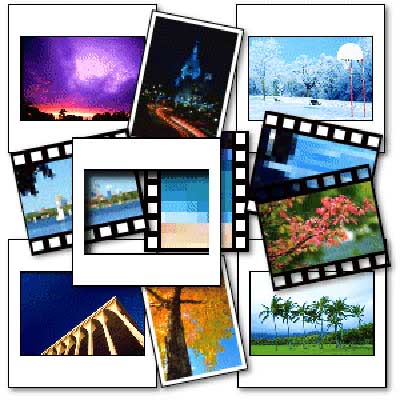
I have a photograph
There are a few basic qualities that combine to make a good photograph. Some of those qualities depend on the photographer's eye and his or her ability to frame an object or scenery aesthetically within the borders of a photograph. Other factors depend on technicalities that can be adjusted and tweaked inside the camera. Some camera settings such as shutter speed and aperture are conspicuous and more or less intuitive. Shutter speed is – as the term suggests – a function of timing and refers to the amount of time that the shutter remains open, allowing light from the subject to be registered on the film or photo receptive sensors of a camera. If you've ever wondered how photographers capture images with streaks of lights from moving cars at night or how water from a waterfall or stream seem to have a silky smooth effect in some photographs, the simple answer is that they have used a lengthier exposure as a result of slow shutter speed. Aperture is the extent to which the shutter opens – effectively regulating the 'amount' of light that enters through the lens and thus on the photo receptive surface. What you need to keep in mind however is, at higher aperture values less light is allowed in than at lower aperture values. As a rule of thumb, shutter speed and aperture should be adjusted inversely (i.e. lower aperture values that allow more light should be used at high shutter speeds and vise-versa). Chances are that your pocket digital camera will not let you adjust shutter speed or aperture settings – for the sake of simplicity because, your average family holiday or picnic is not going to create situations that require such advanced photography. What most people need from a digital camera is speed and ease of use. Super zoom cameras allow greater flexibility by letting you adjust aperture and shutter speed, but the masterful use of those features requires much practice and a deeper understanding of other settings in a camera that compliment their use. Features that go hand in hand with shutter speed and aperture include ISO sensitivity and exposure compensation in digital cameras. In the days of film photography, photographic film was graded on their ISO rating. Film with higher ISO values were more sensitive to light and therefore allowed photographers to take pictures in relatively dark light conditions without having to decrease shutter speed. This is useful if you don't have a tripod for example, because at lower shutter speeds, pictures get blurred as a result of the slight moving and shaking of the camera in your hands. In digital cameras, we can now change the ISO value for each shot. High ISO values however pose a few ISO practical problems. As a result of increasing the sensitivity of the photo receptors, it also contributes to an increase in 'noise' in pictures, which means that pictures taken using high ISO levels are 'grained' and cannot resolve fine detail. Digital camera manufacturers have inbuilt "image stabilizing" mechanisms in their cameras to negate the negative impact of the movement and shaking of the camera but they are practically useless at shutter speeds less than a quarter of a second. The best alternative to using high ISO values for your pictures is to use a tripod whenever it is practical to do so. The combination of shutter speed and aperture is sometimes not enough to fix an appropriate exposure level for am image – particularly when there is a significant difference in brightness between the subject and its background. Most digital cameras allow you to compensate for either the lack of exposure or over exposure by adjusting the Exposure Value (EV) ranging from a minus value to a positive depending on whether the picture is over exposed or under exposed. Some digital cameras – mostly Super-Zooms and DSLRs can display a Histogram of the picture at the moment of its capture. A histogram is a bar graph representing the number of pixels in the image at each intensity level, from totally black to a maximum white. A standard JPEG is what is known as an 8 bit image which means that the lowest intensity value is 0 and the highest representing white is 255 with 128 a mid-tone grey. The histogram is a loose but useful indicator of an image's tonal quality. Having a histogram of the image about to be captured displayed on the digital camera screen is useful to help you achieve a good exposure balance and tonal quality. Even if you don't use it when the image is taken, the histogram can be a useful tool in the image's editing process which we shall discuss next week. Until then, write in with your questions and comments to technopage@gmail.com |
|| Front
Page | News | Editorial | Columns | Sports | Plus | Financial
Times | International | Mirror | TV
Times | Funday
Times || |
| |
Reproduction of articles permitted when used without any alterations to contents and the source. |
© Copyright
2007 Wijeya
Newspapers Ltd.Colombo. Sri Lanka. All Rights Reserved. |
